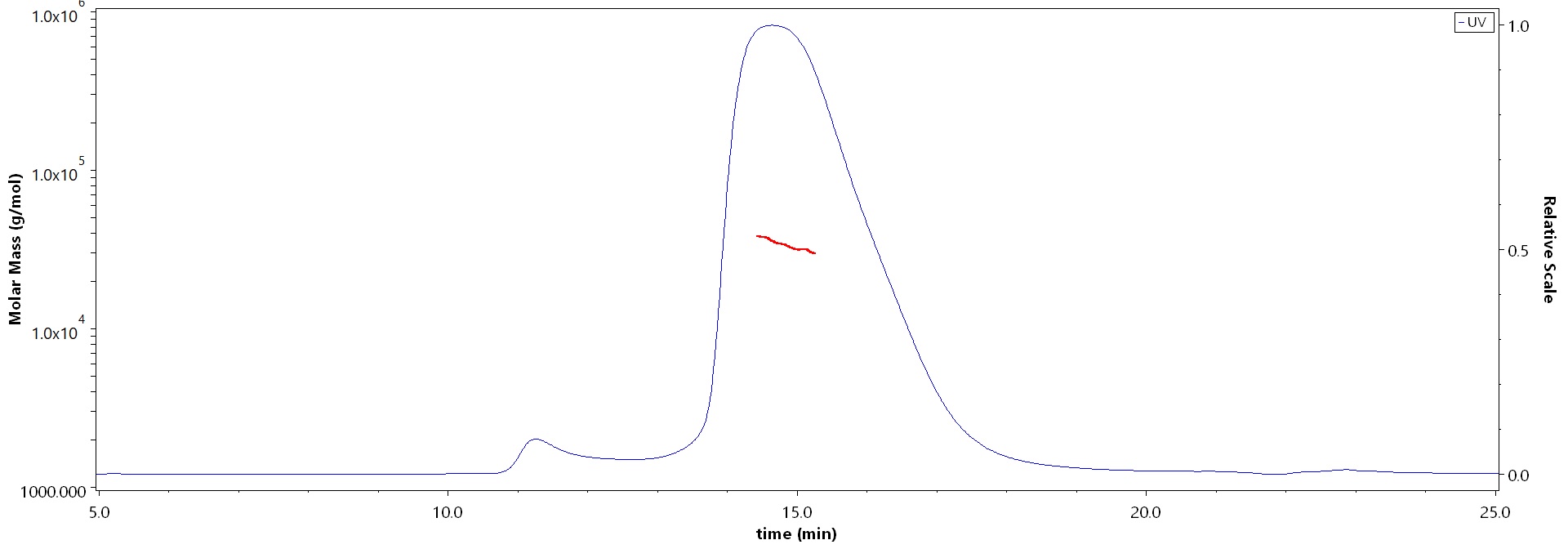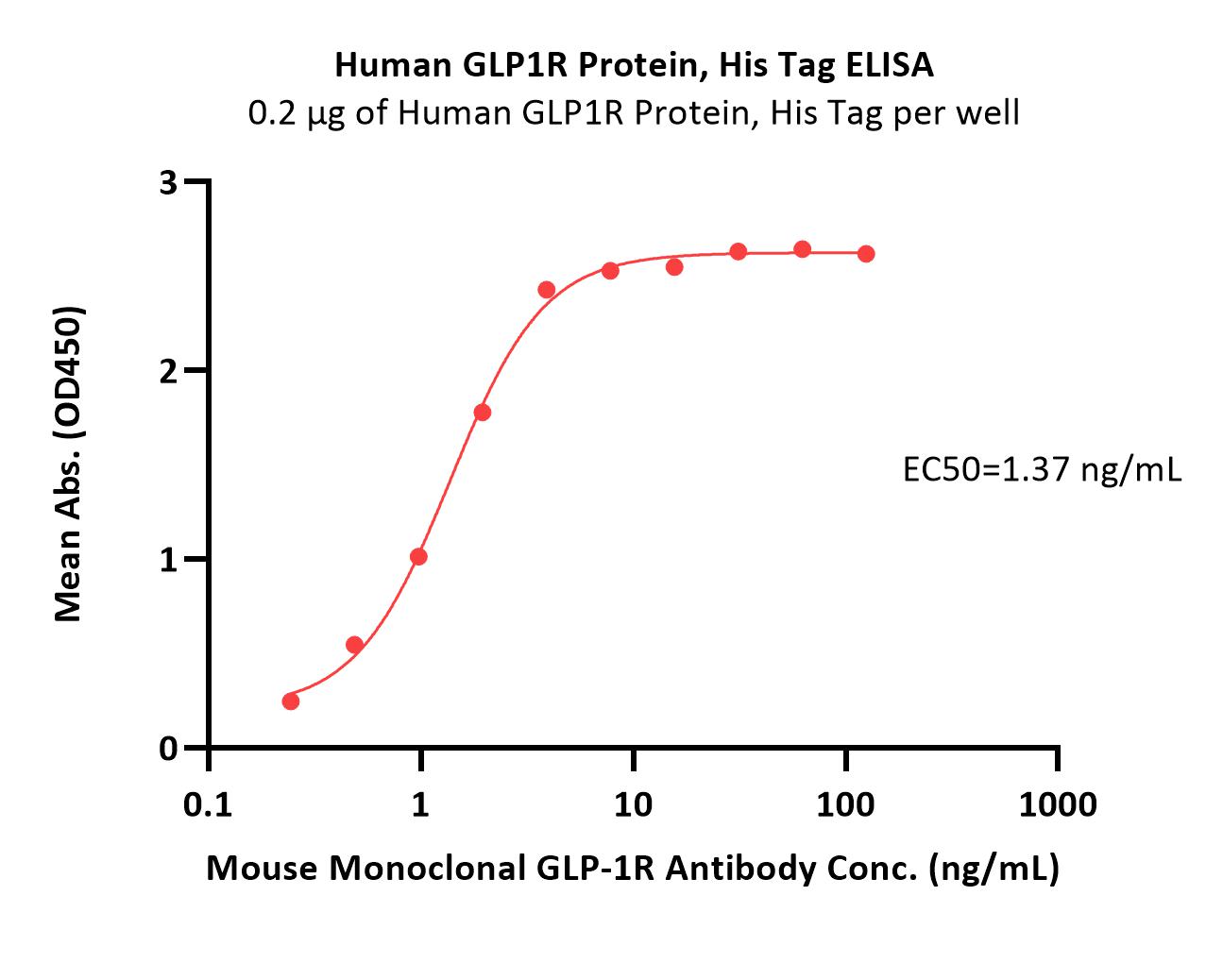分子别名(Synonym)
GLP-1-R, GLP-1R, glucagon like peptide 1 receptor
表达区间及表达系统(Source)
Human GLP1R Protein, His Tag (GLR-H52H7) is expressed from human 293 cells (HEK293). It contains AA Ala 21 - Glu 139 (Accession # P43220-1).
Predicted N-terminus: Ala 21
Request for sequence
蛋白结构(Molecular Characterization)

This protein carries a polyhistidine tag at the C-terminus.
The protein has a calculated MW of 15.6 kDa. The protein migrates as 25-33 kDa under reducing (R) condition (SDS-PAGE) due to glycosylation.
内毒素(Endotoxin)
Less than 0.01 EU per μg by the LAL method.
纯度(Purity)
>90% as determined by SDS-PAGE.
>90% as determined by SEC-MALS.
制剂(Formulation)
Lyophilized from 0.22 μm filtered solution in PBS, pH7.4 with trehalose as protectant.
Contact us for customized product form or formulation.
重构方法(Reconstitution)
Please see Certificate of Analysis for specific instructions.
For best performance, we strongly recommend you to follow the reconstitution protocol provided in the CoA.
存储(Storage)
For long term storage, the product should be stored at lyophilized state at -20°C or lower.
Please avoid repeated freeze-thaw cycles.
This product is stable after storage at:
- -20°C to -70°C for 12 months in lyophilized state;
- -70°C for 3 months under sterile conditions after reconstitution.
电泳(SDS-PAGE)

Human GLP1R Protein, His Tag on SDS-PAGE under reducing (R) condition. The gel was stained with Coomassie Blue. The purity of the protein is greater than 90%.
SEC-MALS

The purity of Human GLP1R Protein, His Tag (Cat. No. GLR-H52H7) is more than 90% and the molecular weight of this protein is around 28-38 kDa verified by SEC-MALS.
Report
活性(Bioactivity)-ELISA

Immobilized Human GLP1R Protein, His Tag (Cat. No. GLR-H52H7) at 2 μg/mL (100 μL/well) can bind Mouse Monoclonal GLP-1R Antibody with a linear range of 0.2-4 ng/mL (QC tested).
Protocol
背景(Background)
G-protein coupled receptor for glucagon-like peptide 1 (GLP-1). Ligand binding triggers activation of a signaling cascade that leads to the activation of adenylyl cyclase and increased intracellular cAMP levels. Plays a role in regulating insulin secretion in response to GLP-1























































 膜杰作
膜杰作 Star Staining
Star Staining











